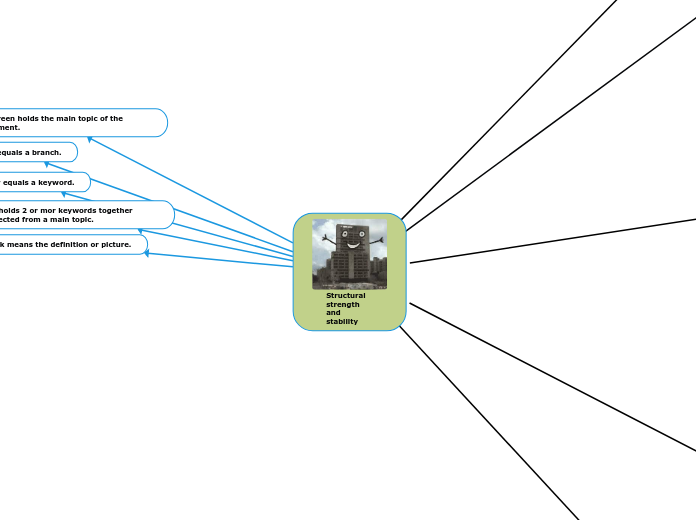Structural strength and stability
Stability
Unstable
A unstable object for example is. If you have a triangle and you put it on the tip of the top it falls over on one of its sides.
Stable
A stable object for example is a square because its base is big making it more difficult to fall over and all its sides are equal showing us its Centre of gravity is in the middle.
Center of gravity
A structure can be made more stable if its Centre of gravity is low rather than high. The wide base and a narrow top also means the Centre of gravity is closer to the ground.
Base of support
A base of support is for example. A foot ball player's pose at the start of a game because their center of gravity is unequal but they put their hand in front of him so his hand is supporting him so he is stable.
Loads
Dynamic loads
Dynamic loads are for example somebody splashing water on their face. What make it dynamic is the water flowing in the air causing dynamic motions.
Static load
Live load
A live load for example is. You climbing a ladder and it makes you a live load because you are not attached and you can get on and off it.
Dead load
A dead load for example is. Sitting on a bench and the thing that you are sitting on is a dead load because you have your static energy pushing on the bench. Its also a dead load because it is attached to the floor.
A good example of a static load can be a person lifting a weight. When its static energy is stronger it means you and the object are being pulled to the center of the earth.
External forces
Magnitude
Magnitude is how strong the force is, for example. pushing a chair with a bit of your force will make it slide a bit but if you put all your force it will probably go rolling far away.
Plane of application
The plane of application is on which angle you are pushing the object from. For example, pushing something from an acute angle or obtuse angle.
Point of application
The point of application is the spot on the structure that the force is being applied to for example. It can be somebody pushing a soccer ball from the middle or the top or bottom of it.
Direction of force
Direction of force can be the place that you push an object from for example. Pushing a ball forward or backward.
Internal forces
Torsion (1 force)
Torsion (2 forces)
Torsion can also be twisting with two hands for example. Twisting a wet cloth to get water out of it.
Torsion is a twisting motion for example. You can grip the object with one hand and twist it with the other.
Tension
Pulling or stretching something gives a tension motion for example. Pulling an elastic or rubber band.
Compression
When forces are pushed in opposite directions. The force of compression is created, and the object gets smaller.
Shear (pulling)
Shear (cutting)
Shear for example, is cutting a piece of paper with scissors because shear can be parallel piece's pulling towards each other.
Shear for example can be somebody tearing apart a twister. Pulling apart two attached parallel piece's makes a shear force.
Strengthening structures
Ties and struts
Struts
A strut is a support that does its work by resisting compression forces increasing is structures strength.
Ties
A tie is a support that does its work by resisting tension forces increasing the structures strength.
Using triangles
Gussetes
A gusset is a piece of solid materials that is used to reinforce the vertices or the joint in a truss.
Trusses
A truss is a frame in an structure that takes advantage of the strength of triangles. A truss is also a structure where many triangle are linked together.
Corrugation
Corrugation is a series of arches or triangles that increase its stability and also resist compression forces better then a flat piece of paper.
Using curves/ arches
Curves are very strong structures because they either use tension forces or compression forces to boost their strength.
Lamination
Lamination is two or more materials bonding together for example. It can be staking lots of pieces of paper making the pieces of paper stronger.
